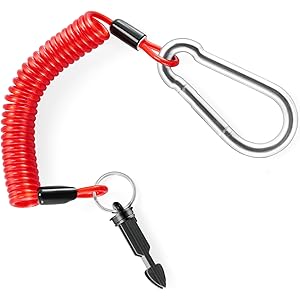As I sit down to write about the cost of manufactured homes in 2024, I can’t help but reflect on how much the housing landscape has changed over the years. With rising property prices and a growing need for affordable housing, manufactured homes have increasingly become a viable option for many. In this article, I will guide you through the costs associated with purchasing a manufactured home in 2024, explore the factors that influence these prices, and provide insights to help you make an informed decision. Let’s dive in!
Understanding Manufactured Homes
Before we discuss costs, it’s essential to understand what manufactured homes are. Manufactured homes, often referred to as mobile homes, are factory-built houses that are transported to a site and installed. They are distinct from modular homes, which are also built in factories but are subject to local building codes. Here’s why they are garnering attention:
- Affordability: They generally cost less than traditional site-built homes.
- Speed of Construction: The factory setting allows for quicker assembly.
- Customization: Many manufacturers offer various floor plans and design options.
What is the Average Cost of Manufactured Homes in 2024?
As of 2024, the average cost of manufactured homes can vary widely based on several factors. According to recent data, the average price for a single-section manufactured home is approximately $50,000, while multi-section homes can range from $100,000 to $200,000 or more, depending on size and features. Here’s a breakdown of the costs:
- Single-Section Homes: Generally range from $40,000 to $70,000.
- Double-Section Homes: Typically cost between $80,000 and $150,000.
- Triple-Section Homes: Can exceed $200,000, especially with high-end finishes.
Factors Affecting the Cost of Manufactured Homes
Several key factors influence the price of manufactured homes, and understanding these can help you make a more informed purchase:
1. Size and Layout
The size of the home significantly impacts the cost. Larger homes with more bedrooms and bathrooms naturally cost more. Additionally, the layout plays a role; open floor plans may require more material and labor.
2. Location
Where you plan to place your manufactured home can affect the price. Homes in urban areas may be more expensive due to land costs, while rural settings may offer more affordable options.
3. Customization Options
Most manufacturers offer customization options, which can significantly increase the cost. High-end finishes, upgraded appliances, and eco-friendly materials can add thousands to the final price.
4. Land Costs
If you don’t already own land, purchasing a lot can be a significant additional cost. The location, size, and amenities of the land will all factor into the overall expense.
5. Installation and Setup
The cost of installation, including utilities, foundations, and permits, can add another $10,000 to $20,000 to your budget. It’s a vital part of the overall cost that many overlook.
Comparing Costs: Manufactured Homes vs. Traditional Homes
When considering a manufactured home, it’s crucial to compare its costs with traditional site-built homes. While manufactured homes are typically more affordable, here are some key comparisons:
- Cost Per Square Foot: Manufactured homes usually cost about half the price per square foot compared to traditional homes.
- Financing Options: While traditional homes often have more financing options, there are specific loans available for manufactured homes as well.
- Depreciation: Manufactured homes tend to depreciate faster than traditional homes, which can affect long-term investment value.
How to Finance Your Manufactured Home
Financing a manufactured home can be different from financing a traditional home. Here are some options you might consider:
1. Chattel Loans
Chattel loans are specifically designed for manufactured homes and are secured by the home itself rather than the land. These loans typically have higher interest rates and shorter terms.
2. FHA Loans
The Federal Housing Administration (FHA) offers loans for manufactured homes that meet specific criteria. This option allows for lower down payments and is a popular choice among first-time homebuyers.
3. Conventional Loans
Some lenders offer conventional loans for manufactured homes, particularly if the home is permanently affixed to a foundation. These loans generally have more favorable terms.
Additional Costs to Consider
While the purchase price is a significant factor, several additional costs may arise when purchasing a manufactured home:
- Insurance: Homeowners insurance for manufactured homes can vary. It’s crucial to shop around for the best rates.
- Utilities: Monthly utility costs can differ based on location and energy efficiency.
- Maintenance: Like any home, manufactured homes require maintenance, which can add to your long-term costs.
- Property Taxes: Depending on where you live, property taxes can impact your overall budget.
Case Studies: Real-Life Experiences
To provide a more comprehensive understanding, let’s look at a couple of real-life case studies from individuals who purchased manufactured homes in 2024.
Case Study 1: The Smith Family
The Smiths, a family of four from Texas, decided to purchase a double-section manufactured home. They spent $120,000 on the home and an additional $15,000 on land preparation and installation. They were able to secure an FHA loan with a 3.5% down payment, which made their monthly mortgage manageable.
Case Study 2: Jane, a First-Time Homebuyer
Jane, a young professional in California, opted for a single-section home costing $55,000. She found a lot in a manufactured home community, which charged $500 monthly for lot rent. Jane financed her home with a chattel loan, allowing her to keep her initial investment low while living in a safe, vibrant community.
FAQs About Manufactured Home Costs
1. Are manufactured homes a good investment?
Manufactured homes can be a good investment, especially for those looking for affordable housing. However, they might depreciate faster than traditional homes, so it’s essential to consider your long-term plans.
2. What is the average lifespan of a manufactured home?
With proper care and maintenance, a manufactured home can last 30 to 55 years or more. Quality and upkeep are critical to longevity.
3. Can I finance a manufactured home without land?
Yes, you can finance a manufactured home without purchasing land through chattel loans. However, this might limit your financing options.
4. How do I find a reputable manufacturer?
Research online reviews, visit local showrooms, and ask for recommendations from friends or family. Ensure the manufacturer is licensed and offers warranties on their homes.
Conclusion
In conclusion, the cost of manufactured homes in 2024 reflects a growing demand for affordable housing solutions. Understanding the various factors that influence these prices, from size and location to customization options, can help you navigate your purchasing decision effectively. With financing options tailored to manufactured homes and the potential for significant savings compared to traditional housing, I encourage you to explore this avenue further.
If you’re considering a manufactured home, I recommend reaching out to local manufacturers for quotes and exploring your financing options. Don’t forget to subscribe to our newsletter for more insights and tips on home buying, and feel free to share this article with friends and family who might also be interested!
Let’s begin this journey together toward finding your perfect home!
JUSTTOP 6FT Breakaway Trailer Cable,Heavy Duty Stainless Steel Spring Towing Coiled Wire,Emergency Brake Wire Camper Safety Breakaway Cable with Pin,RV Trailer Accessories
$6.39 (as of November 15, 2025 07:52 GMT -03:00 - More infoProduct prices and availability are accurate as of the date/time indicated and are subject to change. Any price and availability information displayed on [relevant Amazon Site(s), as applicable] at the time of purchase will apply to the purchase of this product.)
Sign up for our newsletter and stay up to date with exclusive news
that can transform your routine!





